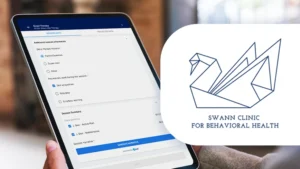Taking the Registered Behavior Technician RBT exam can be stressful to think about. From the seemingly endless lists of tasks and acronyms, to the wide array of concepts and applied behavior analysis (ABA) techniques, the RBT exam requires a lot of preparation and time.
Here are the top 10 tips from CR Institute’s Learning and Organizational Development Manager (ABA Behavioral Health), Dr. Shannon Hill, BCBA-D, to help you prepare for and pass the RBT Exam.
Read a little bit every day
Do not cram! Cramming does not lead to permanent learning. Instead, identify the amount of material that you can comfortably and reasonably read each day. Keep it focused on one or two succinct topics, and take notes while you read.
Take excellent notes
Rather than simply copying the text or writing down what your instructor says word-for-word, create a topic heading and then write concise definitions (see guidance for creating SAFMEDS below). Determine which key points help you differentiate the concept from related concepts, and identify examples of the concept’s application.
Use SAFMEDS (Say All Fast a Minute Every Day Shuffle)
Write your vocabulary words on flashcards, with the term on one side and the definition on the other, keeping the definitions to 21 words or less. Shuffle the cards, set a timer for one minute, and say aloud the term that goes with each corresponding definition. If you are correct, put it in the 'correct’ pile. If you say the wrong term or say nothing, put it in the “incorrect pile.” Do not perseverate on terms you cannot immediately identify - place them in the incorrect pile and move on to the next card. When the timer sounds, record the number you answered correctly and the number you answered incorrectly. To truly do SAFMEDS, you should record your progress on a standard celeration chart (SCC). However, if you do not know how to use the SCC, track your progress by converting your correct and incorrect responses to percentages and placing them on an equal interval graph. If data collection and graphing are important for your learners, it is important for you!
Create RBT Study :ists
Once you have completed your 40-hour training, make a list of topics that you anticipate will appear on the exam. Seek additional information on them by asking a seasoned RBT or Board Certified Behavioral Analyst (BCBA), or by researching the topics in reputable ABA journals and websites.
Try some Registered Behavior Technician Case Studies
Ask your BCBA Supervisor to create “what should the registered behavior technician do?” scenarios for decision-making topics such as ethical dilemmas, responding to problem behavior, writing progress notes, or giving prompts.
Practice Interpreting Graphs
If your BCBA can provide you with de-identified graphs to read and interpret, that is great! However, graphs are everywhere. Try your hand at analyzing graphs that appear in your daily life before you read the explanatory text. Remember that the graphs that appear in the popular press often break the rules, so if your interpretation differs from the written explanation -- see if you can find problems in the graph’s construction. As with everything else, seek feedback from your BCBA on your analysis.
Use stimulus control to your advantage
Establish an area that you will use only for studying, and have a dedicated notebook or computer file for your RBT exam prep. If, however, you notice that you have plateaued or keep making the same mistakes, introduce a stimulus change in order to try to obtain a different result. For example, if you keep confusing positive punishment with negative reinforcement, try facing a different direction or sitting in a different position when you read or practice one of the terms. Simple changes like this give you additional stimulus associations that often help more than you might expect!
Practice the procedures
Whether you are role-playing, teaching your own children, or working under the supervision of a BCBA, nothing will solidify the concepts better than actual implementation. However, this can backfire if you are implementing the procedure incorrectly, so make sure you practice with someone (preferably a BCBA) who can tell you if you are on the right track.
Listen to ABA podcasts
The list of ABA podcasts has proliferated over the past few years. Focus on the ones that discuss implementation or research-to-practice. Listening to the experts is a great way to immerse yourself in the culture and language of ABA. You can start by checking out “ABA On Call” with CentralReach’s Director of Research, Dr. Rick Kubina, BCBA-D!
Manage your “test anxiety"
Set a routine
Have specified times set aside for study and follow through without avoiding it, nor burning yourself out. Continue to exercise, eat healthily, engage socially, maintain hygiene and housekeeping, and manage sleep by going to bed and waking up at the same time every day.
Interrupt disruptive thoughts
As you become aware of negative thinking, take a deep breath - label your emotion - remind yourself that thinking something does not make it true - and say “if I fail, it is not the end of the world; I will just try again.”
Shape your experience with testing
Give yourself a test every day, mimicking the testing conditions as closely as you can to the conditions for the Pearson VUE exam. You can use practice exams for this. If your 40-hour course allows you to revisit the built-in tests, go back through and take the tests again. You want the material to be well-learned, so don’t just take the tests over and over until you pass. Instead, review the questions you missed or passed by guessing. Refocus your study on those items during the next day’s study, and take the tests again at generously spaced intervals.
CR Institute is an ABA-staff training, competency, and skill development platform designed for professionals who serve those in the Autism and IDD care space. Our world-class curriculum gives you everything you need to build a competitive practice and advance your staff members’ careers.
With individualized training, continuing education courses, and a robust learning management system, CR Institute helps you build staff excellence and improve your service delivery - all within one platform.

Dr. Shannon Hill, BCBA-D
CR Institute, Learning and Organizational Development Manager
Shannon Hill, PhD., BCBA-D, is a licensed behavior analyst and licensed professional counselor. She entered the field of developmental disability services as a direct care professional and went on to work as a vocational educator before moving into behavioral supports. She has worked extensively in residential programs, providing services to adults and children with Intellectual Disabilities, Autism, Prader-Willi Syndrome, and a wide range of low-incidence developmental disabilities. She has more than a decade of experience as a consultant working in public school settings, and she has served as an adjunct professor in several university programs. Shannon is passionate about seeing behavior analysis services extended beyond Autism.
Her particular interests are using ABA to support children with ADHD and emotional/behavioral disorders; teach reading and math skills; teach compensatory skills for adults who came of age before widespread early intervention; and to increase the quality of support provided to children and adults in school and residential settings. At CentralReach, Shannon oversees all course content development for CR Institute.






